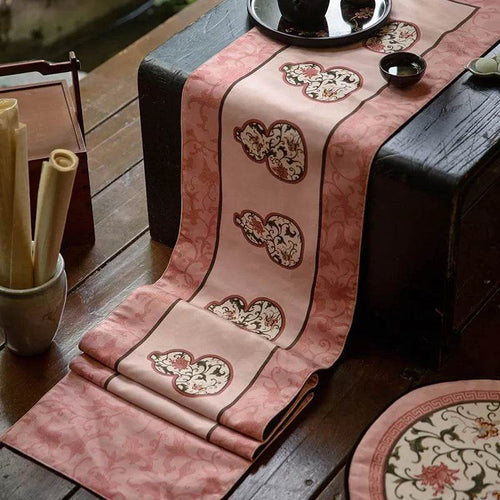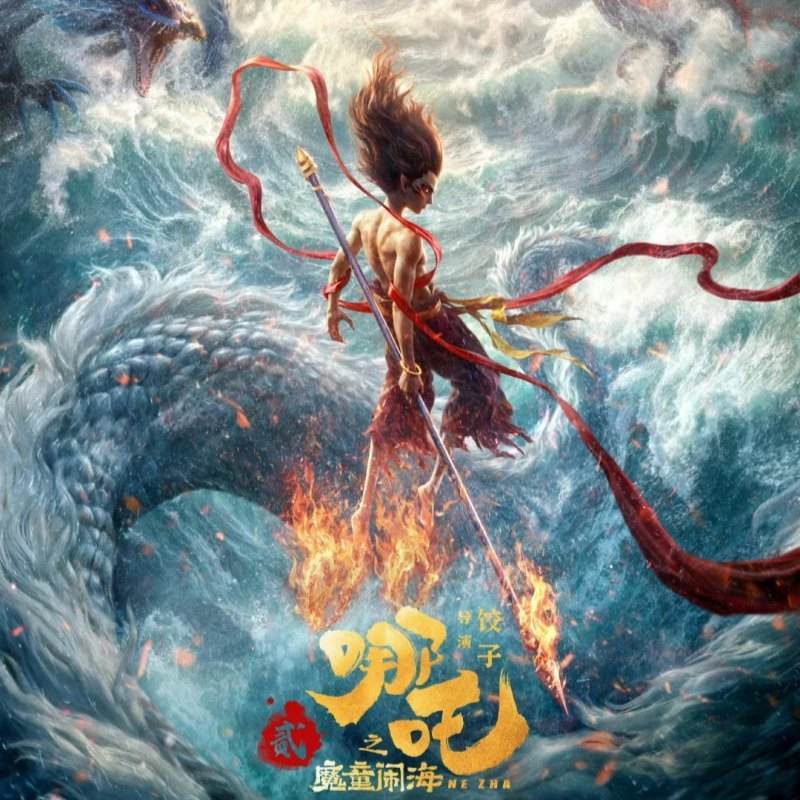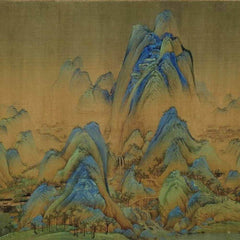Since the release of Ne Zha (《哪吒之魔童降世》) in 2019, the film has redefined the landscape of Chinese cinema, achieving remarkable box office success and critical acclaim. But its journey didn’t end there—Ne Zha’s impact continued with its highly anticipated sequel, Ne Zha 2 (《哪吒2:魔童闹海》), which is making waves in 2025 with even stronger box office numbers, further solidifying its place in the global spotlight. The success of the first film and its sequel is the result of multiple factors working in harmony. Let's delve deeper into why this animated film became such a monumental hit, analyzing its animation design, voice acting, thematic elements, plot structure, technological innovations, and its strategic release timing during the Spring Festival.
1. A Revolutionary Animation Character Design
-
Breaking Away from Tradition
The most striking aspect of Ne Zha is its re-imagining of the character. Unlike the traditional image of a righteous, divine hero from Chinese mythology, the film presents Ne Zha as a rebellious, cheeky "demonic child" with a unique design featuring smokey makeup, sharp teeth, and a carefree attitude. This "ugly-cute" design breaks away from the usual heroic archetypes, creating a memorable visual contrast that appeals to modern youth, who are drawn to characters that challenge norms and embrace individuality. Ne Zha's rebellious and defiant traits resonate with young viewers' desire for self-expression and personal growth. -
Modernizing Oriental Aesthetics
The film skillfully blends traditional Chinese cultural elements like ink painting and bronze artifacts into the design of characters and settings, while using cutting-edge 3D animation technology to bring these elements to life in a dynamic and visually stunning way. This fusion of traditional and modern aesthetics not only preserves the cultural heritage but also aligns with contemporary visual preferences, appealing to both Chinese and global audiences.

2. Voice Acting and Emotional Resonance
-
Humor through Dialects and Relatable Dialogue
One of the film’s key strengths lies in its voice acting, particularly the use of humor through local dialects. The character of Taiyi Zhenren, voiced with a distinct Sichuan dialect, adds an unexpected comedic touch, contrasting with the otherwise intense storyline. Meanwhile, Ne Zha's modern slang and witty lines, such as the famous "I control my destiny, not the heavens" (我命由我不由天), bring the character closer to younger audiences. This blend of dialect and contemporary language adds layers of relatability while avoiding the preachiness often found in traditional narratives. -
Voice Performance and Emotional Depth
The character of Ne Zha is voiced by Lü Yanting, who brings emotional depth to the role. Through her performance, Ne Zha’s growth—from rebelliousness to maturity—feels authentic and powerful. Her delivery of the iconic line “I control my destiny, not the heavens” becomes the film's emotional core, symbolizing Ne Zha's resistance to fate and his desire for self-determination.
3. Universal and Timely Themes
-
The Anti-Destiny Theme
The phrase "I control my destiny, not the heavens" resonates deeply with today’s young generation, who are often faced with societal pressures, career stress, and the feeling of being trapped by systemic forces. This theme of challenging fate is universal, striking a chord not just within China but globally. It links traditional "destiny-defying" cultural narratives with modern-day struggles for individuality, freedom, and control over one's own path in life. -
Redefining Family Relationships
The film also reshapes the traditional family dynamic. Ne Zha’s parents are no longer the typical “stern father and kind mother” but are depicted as modern parents willing to sacrifice for their child. In particular, Ne Zha’s mother, Lady Yin, is portrayed as a working mother, reflecting contemporary family values. This portrayal of parental love and sacrifice resonates with modern audiences, particularly those who see themselves reflected in the evolving roles of parents today.

4. Narrative Structure and Plot Tension
-
Complex Relationships and Plot Twists
The narrative structure of Ne Zha is designed to keep the audience engaged. The movie presents multiple emotional conflicts and relationships that are full of unexpected twists. The strained relationship between Ne Zha and his parents, his developing friendship with Ao Bing (the Dragon Prince), and the movie’s numerous plot reversals create a compelling emotional journey. The story is not just about Ne Zha’s personal growth but also about understanding familial love, friendship, and responsibility. The ultimate resolution—parental understanding and acceptance—adds a warm and uplifting note to the film. -
Pacing and Humor Integration
The film balances intense action sequences and emotional drama with moments of humor, making it more accessible and enjoyable for all audiences. Taiyi Zhenren's use of Sichuan dialect adds a humorous dimension to the narrative, providing relief from the film’s otherwise intense moments. These lighter moments enhance the overall viewing experience, making complex themes easier to digest and more engaging.
5. Visual Effects and Technological Innovation
-
State-of-the-Art Animation
The animation quality in Ne Zha is a major highlight. The film utilizes top-tier 3D animation technology, creating stunning visuals and intense action scenes that are both breathtaking and original. The battle sequences are particularly noteworthy, showcasing Ne Zha’s fight against various opponents in a visually spectacular manner. The artistic rendering of traditional Chinese elements—such as flames, clouds, and ink painting—blends seamlessly with modern animation techniques, offering a visual feast that appeals to both Eastern and Western sensibilities.

6. Timing and Marketing Strategy
-
Strategic Release During the Spring Festival
Ne Zha premiered during the Spring Festival, which is a peak period for Chinese cinema. The Spring Festival is a time when families come together to celebrate, and movie-going is an important activity. This timing allowed the film to reach a wide audience, particularly families and younger viewers. The film’s positive messages of familial love, friendship, and self-discovery made it a perfect fit for the festive season. As a result, Ne Zha became a holiday favorite, leading to a huge box office turnout.

7. Marketing and Values: Defying Fate and Promoting Positive Energy
-
Resonating with Social Sentiment and Cultural Confidence
The film’s marketing strategy highlighted themes of self-determination and defiance of fate, which deeply resonated with the social sentiments of today’s youth. The message of “I control my destiny” is not only a declaration of Ne Zha’s personal rebellion but also a universal message that speaks to young people’s desire for independence and their struggle to find meaning in an often unfair world. The film's promotion emphasized the importance of self-expression and cultural pride, becoming a symbol of positive energy and a source of cultural confidence for Chinese audiences.
Interested in how Ne Zha 2 continues the legacy of its predecessor? Check out our detailed exploration of Ne Zha 2: The Return of the Rebellious Hero, where we break down the stunning animation, themes of rebellion, and the movie's visual innovations.
Conclusion: The Underlying Logic of Its Success
The success of Ne Zha lies in its modern reimagining of a traditional cultural icon. Through innovations in animation, narrative structure, and the incorporation of universal values, the film transformed a classic Chinese myth into a global cultural phenomenon. Its success marks not just a triumph of a single film but also a new era for Chinese animation, where cultural output is no longer just about technical imitation but about offering stories that resonate on a global scale. Ne Zha’s breakout success signals a new chapter in Chinese animation—one where creativity, cultural heritage, and technological innovation collide to produce works that have the potential for global impact.











































